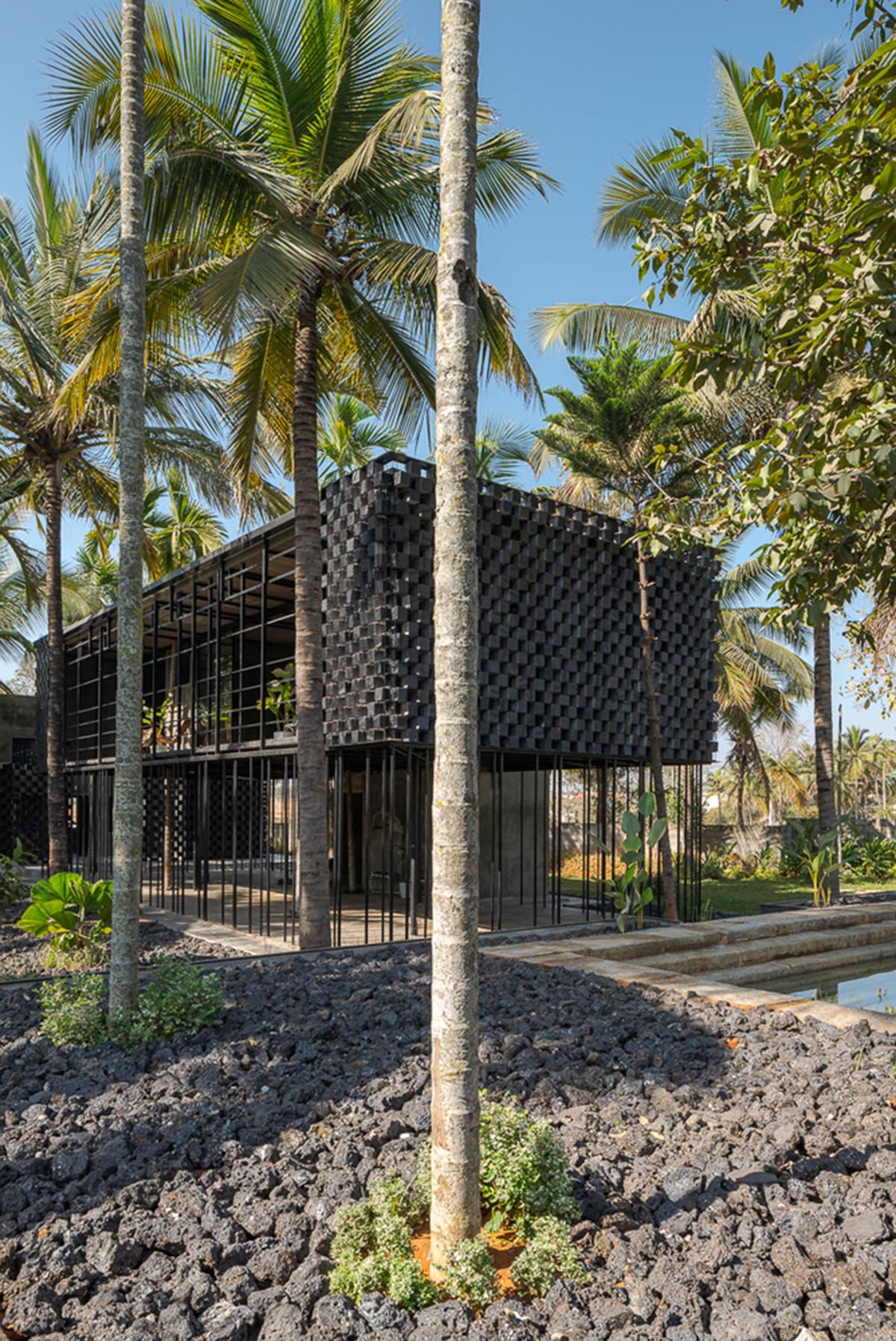Project name: House on Pipes
Architects: Parallax
Size: 6069.0 ft²
Location: Bangalore, India
The weekend house is designed by Parallax Architects, Bangalore, raised on slender still stilts amidst coconut trees. The site is located on the outskirts of Bangalore in a moderate climate zone, in a quiet and remote neighborhood, spread across 1.5 acres of flat land. Coconut trees cover the whole site in a grid style.
The concept behind this weekend house was that it should have minimal contact with the soil. This was crucial in order to select the materials. The building was oriented such that it brings the view of sunrise and such set filtering through the trees.
The aim was to design a weekend getaway house of 2 Bedrooms, within a limited budget and without harming the natural environment. Access to the residence can be from any direction, with the landscape as natural pathways and the building has a minimum footprint. The architects got inspired by the linearity, sleek supports and wide canopies of trees. To begin with the concept of having similar slender supports uplifting the built space and making minimal contact with the land.

The building is a light structure and purely based on the previously proposed landscape space, leading to a built and unbuilt complimenting each other. The material chosen was steel as the built space is supposed to be light and should leave a minimum footprint while elevating the building. This allowed the landscape to continue its journey throughout the site.
The architects’ aim was to build the house amidst nature, away from the daily hustle and regular commitments. It was laid out such that it fits perfectly into its site context. The landscape elements with lush greenery and a stepwell on the 1.5-acre site, directed for the design process. The city receives an annual rainfall of 900mm, hence the site runoff issued for groundwater recharge.
Concrete supports on the center alongside the slender steel pipes are distributing the load. The front facade of the house seems like it is floating in the air and also allowing a free flow movement of wind across. The steel pipes, on the surface along the perimeter, in a staggered formation, provides rigidity, stiffness, and stability to the above living space. The spine runs through in diagonals to make the structure stable.
A well-balanced ratio is there in the design of negative and positive, voids and solids, built and built, making the project a challenge to design as the balance is achieved by having very minimal surface area used by the built structure. Well trained laborers were guided by designers and structural consultants to make this light, but strong structure a reality.
“Nature the process of a seed that transforms into a seedling, a plant and then into a tree by taking the help of its surrounding elements and growing out into roots and shoots that help support it, stand on the ground and prepare food for its progress and wellbeing. The shoots go up seeking the fresh air and sunlight preparing food while the rest of the plant is tensed as its lower half of the body is stationary and yet the roots burrow deep down into the soil with rigidity. The shoots of a plant branch out and twist and turn into different planes and axis, all with one single yet sturdy trunk taking the load.” stated the firm. Using this principle structural stability is ensured of the built space, using built and stable space to support the unstable areas.
The living space is protected with three layers of materials. First and foremost, the bison board, the middle sandwiched layer, a sheet of glass wool for thermal comfort and protection chosen in accordance with the climatic conditions of the site. And lastly, the outermost layer is capped using the fly ash blocks to lower down the temperature and make a comfortable breathing environment within.




